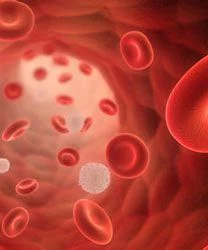Article
Risk-Adapted CAR T Dosing Maintains Efficacy, Improves Safety in Pediatric Relapsed/Refractory ALL
Author(s):
A risk-adapted CD19 CAR T-cell therapy dosing approach allowed pediatric patients with relapsed/refractory acute lymphocytic leukemia to maintain a high rate of remission, while reducing the risk of severe toxicities among those with a high initial disease burden

A risk-adapted CD19 CAR T-cell therapy dosing approach allowed pediatric patients with relapsed/refractory acute lymphocytic leukemia (ALL) to maintain a high rate of remission, while reducing the risk of severe toxicities among those with a high initial disease burden, according to results from a phase 1/2 trial (NCT03467256) presented at the 47th Annual Meeting of the EBMT.1
A single dose of fresh CD19 CAR T at 0.1 x 106/kg induced minimal residual disease (MRD)–negative complete remission (CR) among patients with a high leukemia burden. In cohort 1 of this study, 24 patients (89%) achieved a CR at day 28 after infusion, while in cohort 2, 14 patients (100%) achieved a CR at day 28.
“A locally manufactured CAR T approach allows for a flexible and robust delivery to patients in need,” Olga Molostova, MD, of the Dmitriy Rogachev National Medical Research Centre of Pediatric Hematology, Oncology and Immunology, said in an oral presentation of the data.
Investigators at the Dmitriy Rogachev Center has initiated a prospective trial to examine the locally manufactured CD19-targeted CAR T-cell product construct MB CART 19.1 (4-1BB_CD3zeta) in pediatric patients with relapsed/refractory B-cell ALL. The primary end point of the study was safety and efficacy of CD19 CAR T cells based on MRD responses on day 28 after infusion.
To produce the CAR T cells, investigators utilized fresh, unstimulated leukapheresis product as starting material, Molostova said.
In the first portion of the trial, 30 patients with B-cell ALL were enrolled to cohort 1 from 2018 to June 2019. Patients were treated with the CD19-targeted CAR T-cell therapy in a dose-escalation design starting at 0.1 x 106/kg, to 0.5 x 106/kg, to 1 x 106/kg, up to 3 x 106/kg.
The production cycle took 12 days from apheresis, and if ex vivo transduction and cell expansion were successful, patients began fludarabine/cyclophosphamide lympho-depleting chemotherapy was given on day -5. Additionally, tocilizumab (Actemra) was administered as a potential cytokine release syndrome (CRS) prophylaxis 1 hour prior to CAR T-cell infusion.
To be eligible for enrollment, patients had to be between 3 months and 25 years of age, with relapsed or refractory CD19-expressing B-cell ALL. Those with less than 30% expression of CD19 on the leukemic population were not able to participate.2
Twenty-seven patients in cohort 1 were eligible for response at day 28 after infusion. Of these patients, 24 (89%) achieved MRD-negative remission, 3 patients died prior to day 28, and treatment-related toxicities were observed in 19 patients. Relapse after initial response occurred in 18 patients, and the median time to relapse was 180 days.
Despite receiving prophylactic tocilizumab, a minority of patients (n = 6/30) in cohort 1 experienced severe CRS and immune effector cell–associated neurotoxicity syndrome (ICANS). However, these toxicities were largely associated with high leukemia burden at the time of enrollment, or greater than 20% blasts in the bone marrow. “These data correlated well with our investigators’ results,” noted Molostova.
For cohort 2 of this study, the trial protocol was amended to include lymphodepletion treatment comprised of fludarabine and cyclophosphamide. Twenty-four patients were enrolled to this cohort, and patients were stratified based on low-leukemia burden, defined as less than 20% blast cells in the bone marrow (n = 10), and high-leukemia burden, defined as greater than 20% blast cells in the bone marrow (n = 14). “Patients with low-disease burden received fixed CAR T-cell dose of 1 x 106/kg after 7 days of manufacturing,” said Molostova.
Patients in cohort 2 with high-leukemia burden were put on a modified treatment scheme. First, these patients received an escalated lymphodepletion comprised of fludarabine plus cyclophosphamide, paired with VP-16, cytarabine, and dexamethasone. Infusion of CD19 CAR T cells was split for this cohort; patients received a dose of 0.1 x 106/kg on day 0 and a second infusion of 0.9 x 106/kg on days 7 through 14. Criteria for the second dose of CAR T-cell infusion was the absence of CRS or ICANS greater than grade 2 and the reduction of leukemia burden to below 20%.
Of the 14 patients with high-leukemia burden enrolled to cohort 2 of the study, 4 received a second dose of CD19 CAR T-cell infusion. Of those patients, 1 developed grade 3 CRS, and grade 1 ICANS after the second infusion. In total, 10 patients with high leukemia burden got a total dose of 0.1 x 106/kg, and all of them achieved CR at day 28.
In total, no incidents of severe (grade 4/5) CRS were observed in patients with low-leukemia burden, across both study cohorts. In patients with high-leukemia burden, 1 patient in cohort 1 experienced grade 4 CRS, and no severe cases were reported in cohort 2.
In cohort 1, 13 patients experienced ICANS, with 4 patients experiencing grade 3-5 effects. Two patients died from fatal brain edema, noted Molostova. In cohort 2, 13 patients experienced ICANS, but just 1 patient with low-leukemia burden reported grade 5 ICANS. No patients with high-leukemia burden in cohort 2 reported severe ICANS.
References
- Molostova O. CD19 CAR T therapy in children with R/R ALL: adaptive split dosing improves safety and maintains efficacy of the approach. Presented at: 47th Annual Meeting of the European Society for Blood and Marrow Transplantation; March 14-17, 2021; Virtual. Accessed March 15, 2021.
- CD19 T-CAR for treatment of children and young adults with r/r B-ALL. ClinicalTrials.gov. Updated July 7, 2020. Accessed March 15, 2021. https://clinicaltrials.gov/ct2/show/NCT03467256









